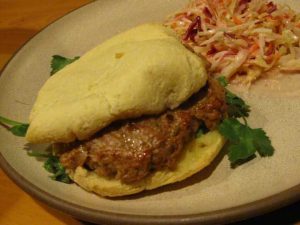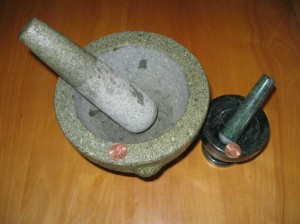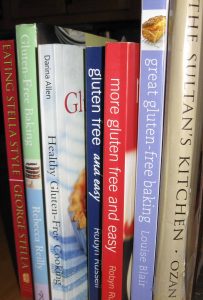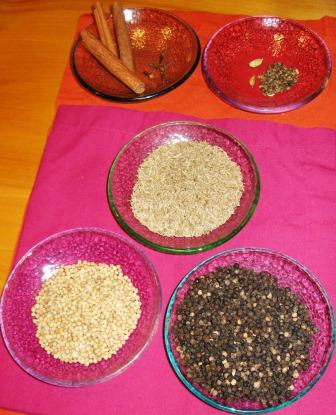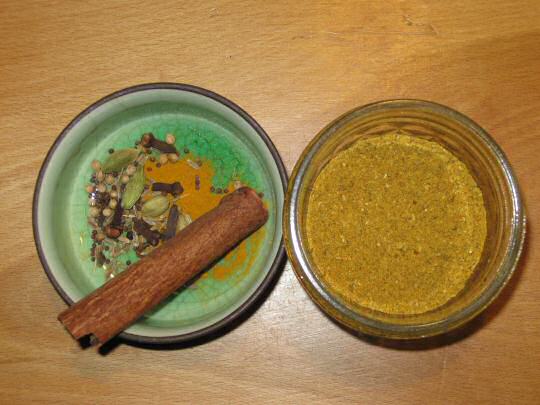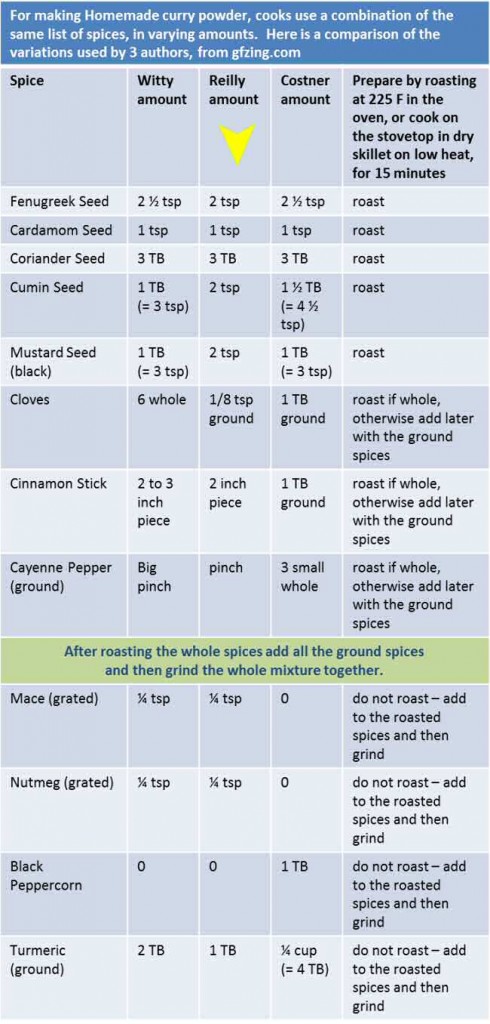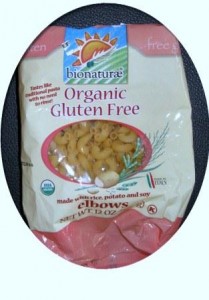By Alice DeLuca
Would you like to buy a few metric tons of tomato paste? For only $786 per metric ton you may purchase a minimum of 20 metric tons in 238 kilogram drums. That’s one of the interesting business opportunities that are dropped in the email box of a food blogger these days.
Food bloggers also receive lots of offers for coupons. The scheme goes like this: if the blogger will just agree to write nice things about Company X, the company will provide coupons to offer to blog readers as enticements for them to visit, thereby driving up the blog’s popularity as measured by page visits.
Instead of money and real compensation, manufacturers and marketers offer the food writing community coupons in exchange for the virtual currency of “visits.” Using coupons of very little value, and shamelessly taking advantage of blogger vanity, the company receives “exposure” without having to spend a single honest dollar for advertising. The problem is that this currency of “visits” and coupons is coinage that the blogger cannot spend or barter for things of real value.
Also common is the “free sample” offered so the hapless food blogger will “tweet’ about the product or perhaps “like” the product on Facebook, thereby starting a viral marketing event that companies dream about. I have found entire Styrofoam containers of frozen food products shipped to my doorstep, sent by a startup company hoping I will write favorably about their product and start a stampede of customers. Few of these products have been even as tasty as hospital food. In addition, since 2009, if a blogger receives a product in exchange for a review, the Federal Trade Commission requires the blogger to disclose the gift.[i]
In contrast to the coupon offers, the solicitation to purchase a metric ton of tomato paste feels respectful, – a potentially honest, clean business arrangement instead of like cash left on a dance hall girl’s bedside table in a film noire. The blogger can reject coupon and sample offers every day, even when the offer is for a delivery of sample beer. Perhaps all bloggers should, united, refuse the “cheap date” coupon and sample offers, just as a matter of pride even if they don’t care about earning a living.
The recent tomato paste sales pitch caught my attention and made me wonder about the global value and volume of tomato paste. Haunted by the idea, I couldn’t really leave the subject alone. As soon as I began to think about it, I saw tomato paste everywhere. Americans consume 2.5 billion pounds of tomato paste each year, in various forms – condiments, pizza and spaghetti sauces, drink mixes. [ii]Hundreds of millions of metric tons and billions of dollars’ worth of tomato paste are moved hither and yon, all over our now-flat world[iii], eventually landing on the shelf of the local grocery store in ludicrously sized 6 ounce cans.
Elizabeth David tells us that in Italy “before the days of canned food and preserves concentrated tomato paste was made by drying the cooked tomato sauce in the sun.” She reports that it was sold in “loaves the colour of dark mahogany” and she notes that the commercial product available in Parma fifty years before she was writing (so around 1908) reduced the tomatoes to 1/7 of their original volume[iv]. She notes that only a very small amount of tomato paste should be used as it is very strongly flavored.
Tomato paste companies sprang up in the early 20th century[v], creating what became an expensive commodity in the Second World War (based on the prices for tomato paste in the ration books of the period[vi]) before retreating to its inexpensive status today. In 1950s Australia, it was manufactured and “predominantly sold to Italian delis and restaurants to make the base of sauces.”[vii]
The vast amount of tomato paste we humans use has lured the dishonest broker to the table, so government resources and strategies for quality control have been brought to bear. Aside from ascertaining what the components of a paste are, it is also difficult to assess the quality of pastes when surreptitious thickeners are used to sop up the free liquids in the paste. A company might very well try to thicken up their tomato paste with something other than tomatoes, and so begins the procedural-crime-drama game in which the government tries to regulate the requirements for various food products. Unregulated, the contents of any canned food would likely be a mystery.
Study, for example, the case of the mislabeled tomatoes: In 1912, the U.S. seized canned tomato paste and canned peeled tomatoes that were supposedly “Vesuvian” but actually came from New Jersey, and found that the contents consisted “wholly or in part of filthy, putrid, and decomposed vegetable substance.“ The canned tomatoes were released on bond, if you can believe it, while the tomato paste was ordered destroyed.[viii] With lightning speed, the first U.S. food standards for tomato paste were issued – nearly 3 decades later – in 1939.[ix]
In 1971, the USDA (U.S. Department of Agriculture) noted the need for uniform consistency in its fascinating “Methods of Analyses for Tomato Products: Determination of Consistency.”[x]
“With the advent of the tomato paste “futures” market, a measurement of consistency of tomato paste scheduled for delivery against exchange contracts must be determined.”
The device recommended for measuring consistency is laid out: The Bostwick Consistometer[xi]. This device is still in use today, even available on Amazon.com, and allows the user to create a sort of lava-flow of ketchup or mustard, or in this case tomato paste, to see how far the condiment will travel in a given time. A low number represents a thicker condiment.
It is easy to imagine testing a squirt bottle mustard and a jarred mustard, but harder to picture the tomato paste test. Clearly any tomato paste that runs downhill at all, in any length of time, would be too thin. Tomato paste is a “non-Newtonian suspension.”[xii] It is thick, and fundamentally it is a paste. For the record, a whole can of tomato paste, removed from its can, will slide down an inclined porcelain surface as a whole unit – just had to try that.
A 6 ounce can of tomato paste is nearly always more tomato paste than is required by modern American recipes so a substantial amount of product will be wasted in the end, leaving the buyer in a state of “tomato paste regret.” There is a very narrow historical window in which the 6 ounce can[xiii] was the common basis for an entire spaghetti sauce, somewhere in between Elizabeth David’s Italian Cooking and the current day. Today, recipes use substantially less tomato paste, on the whole.
Malcolm Gladwell gives us a clue as to the current state of American tomato pastes, which are getting farther and farther from plain tomato paste – flavored and tarted up with spices and garlic. In a TED talk about spaghetti sauce and happiness[xiv], he recounts the development of varieties of commercial spaghetti sauce (usually overly sweet, thick, unctuous and gooey in my opinion) that changed the way that Americans purchase prepared sauce. The tomato paste industry has apparently applied the same thinking to tomato paste, now providing different flavors of tomato paste, and in a dark new twist, the cans may only be labeled “PASTE” with the word “tomato” in tiny letters off to the side. Take a look at the major brands when you next visit the grocery store and you will see this bizarre phenomenon in action.
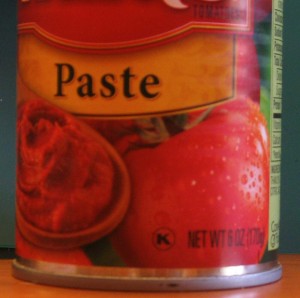
How does tomato paste taste, actually? A bunch of us sat down to dinner on a weeknight in March and opened up 4 cans and a tube of tomato paste. The prices varied from 69 cents for the can to more than 3 dollars for the tube. Although all these products did taste fundamentally of tomatoes, cries of “acrid”, “bitter”, with “hay” or “hamster bedding” notes, filled the air around the table. In general, the pastes were not particularly appealing on their own.
We all remarked about the ubiquitous recipe ingredient “1 Tablespoon of tomato paste” – so irritating because if 1 Tablespoon is used, an open can of paste will lurk in the refrigerator, pressuring the cook to use it up or store it carefully, otherwise wastefully discarding it later while around the world there are people starving.
Helpful websites provide hints about how to portion and store tomato paste, suggesting that other consumers are unhappy with the can sizes as well. You can cut out both ends of the can, push out the tomato paste as a cylinder, slice it and freeze the slices.[xv] Did you know that? Or you could smush tomato paste in to ice cube trays, freeze them and pop out the cubes for later use. Substitutions are also an option – such as rehydrated and blended dried apricots or prunes to provide a paste consistency and that intriguing sweet-sour note, or dried tomatoes. The tomato is also a fruit, after all, not a vegetable. And yet, we have all read that the school lunch program recognizes 2 tablespoons of tomato paste as a vegetable[xvi].
The place where tomato paste became a vegetable is The Nutrition Standards for School Meals[xvii] which reads like the 10-K filing for an insider-trading corporate executive. It is in the “fine print” and footnotes of the document that the reference to tomato paste resides.[xviii]
“tomato paste and puree are credited based on calculated volume of the whole food equivalency.”
In these same fine documents we learn the shocking and perhaps more interesting news that acorns are not permitted as a nutritional equivalent to meat. This exclusion suggests that someone somewhere might have been planning to try to feed acorns to school children, as if the children were pet squirrels. So, next time you reach for the acorns to build dinner, just remember that these are not the same as meat.[xix] As greatly perceptive as children are, the ludicrous irony of the school lunch program will not be lost on them, and one day those same children will be running the country. Think about this future world, FDA, before your bureaucracy compromises on child nutrition, hiding the outcome in these footnotes and allowing a canned paste to have the same stature as a fresh vegetable.
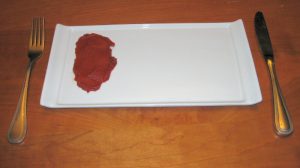
We will one day look back at the beginning of the 21st century, when adults fed tomato paste to children calling it a vegetable, manufacturers called a food product “paste” without really saying what kind of paste, and advertisers offered coupons and promised “visitors” to writers instead of money, as if these held value like a coin of the realm. Perhaps we can somehow alter the course we are on, as we go further and further in to the virtual world, and ascribe greater value to the real things than to the false products that surround us.
[i] Arango, ArangoTim. “Soon, Bloggers Must Give Full Disclosure.” Http://www.nytimes.com. New York Times, 05 Oct. 2009. Web. 19 Apr. 2012. http://www.ftc.gov/opa/2009/10/endortest.shtm
[ii] “2011 Tomato Paste and Processed Tomato Statistics.” Www.morningstarco.com. The Morning Star Packing Company, 31 Mar. 2011. Web. 19 Apr. 2012.
[iii] “Processed Tomato Products Outlook and Situation in Selected Countries.” FAS/USDA. Horticultural & Tropical Products Division, Sept. 2003. Web. 19 Apr. 2012.
[iv] David, Elizabeth. “The Italian Store Cupboard: Pomidoro E Concentrato Di Pomidoro.” Italian Food. New York: Alfred A. Knopf, 1958. 29-30. Print.
[v] “Contadina Roma Style Tomatoes: Tips and Advice: Our History.” Contadina Roma Style Tomatoes. Delmonte Foods Corporation. Web. 19 Apr. 2012. <http://contadina.com/tips-advice/history.aspx>.
[vi] Office of Price Administration. Handy Point Chart for Processed Foods: Point Values of Popular Items, Effective October 31, 1943. Ames Historical Society. Des Moines Tribune. Web. <http://www.ameshistoricalsociety.org/exhibits/events/rationing_paper.jpg>.Des Moines Tribune, Friday October 29, 1943, Page 9.
[vii] “Food Label – La Tosca Tomato Paste, 1950s.” Melbourne Museum. Museum Victoria. Web. 19 Apr. 2012.
[viii] U.S. v. 50 Cases Peeled Tomatoes No. 3 Cans; U.S. v. 50 Cases Peeled Tomatoes No. 2 Cans; U.S. v. 50 Cases Tomato Paste. Http://archive.nlm.nih.gov/fdanj/bitstream/123456789/38466/4/fdnj02984.pdf. Middle District of Pennsylvania. 30 Mar. 1914. Print. See Bureau of Chemistry Service and Regulatory Announcements. 1914. p.198-199.
[ix] “Snapshot of Food Safety Milestones in the History of the FDA.” Snapshot of Safety Milestones in the History of the FDA. U.S. Food and Drug Administration, 19 July 2011. Web. 19 Apr. 2012. <http://www.fda.gov/Food/FoodSafety/FSMA/ucm238505.htm>.
[x] USDA. Methods of Analyses for Tomato Products: Determination of Consistency. USDA. U.S. Department of Agriculture: Processed Products Standardization and Inspection Branch, Sept. 1971. Web. 19 Apr. 2012. <http://www.ams.usda.gov/AMSv1.0/getfile?dDocName=STELPRDC5074096>.
[xi] Gatenby, Art. “Bostwick Consistometer – Incline or Not.” CSC Scientific Blog: A Blog About Test Equipment. CSC Scientific Company, Inc, 27 Aug. 2009. Web. 19 Apr. 2012. <http://www.cscscientific.com/csc-cientific-blog/bid/25543/Bostwick-Consistometer-Incline-or-Not>.
[xii] Heidarinasab, A., and V. Moghaddam Nansa. “Time Independent Behavior of Tomato Paste.” World Academy of Science, Engineering and Technology 62 (2010). Web. 13 Feb. 2012. <www.waset.org/journals/waset/v62/v62-8.pdf>.
[xiii] Other can sizes have withered on the vine of history – the “No. 1 Picnic” or the No. 303, for example[xiii]. Perhaps the 6 ounce can for tomato paste will join them!
[xiv] Gladwell, Malcolm. “Malcolm Gladwell on Spaghetti Sauce.” TED: Ideas worth Spreading. TED Conferences, LLC, Sept. 2006. Web. 19 Apr. 2012. <http://www.ted.com/talks/malcolm_gladwell_on_spaghetti_sauce.html>.Recorded February 2004
[xv] Deb. “Get the Most Out of That Can of Tomato Paste.” The Scoop : Posts from the BHG Test Kitchen. Meredith Corporation: Better Homes and Gardens, 7 Jan. 2011. Web. 19 Apr. 2012. <http://www.bhglivebetter.com/community/blog/2011/get-most-out-can-tomato-paste-0>.
[xvi] Kliff, Sarah. “No, Congress Did Not Declare Pizza a Vegetable.” Washington Post. The Washington Post, 21 Nov. 2011. Web. 19 Apr. 2012. <http://www.washingtonpost.com/blogs/ezra-klein/post/did-congress-declare-pizza-as-a-vegetable-not-exactly/2011/11/20/gIQABXgmhN_blog.html>.
[xvii] “Final Rule Nutrition Standards in the National School Lunch and School Breakfast Programs – Jan. 2012.” United States Department of Agriculture : Food and Nutrition Service, Jan. 2012. Web. 19 Apr. 2012. <http://www.gpo.gov/fdsys/pkg/FR-2012-01-26/pdf/2012-1010.pdf>.
PDF document – one page summary of regulations
[xviii] “PART 210—NATIONAL SCHOOL LUNCH PROGRAM: § 210.10 Meal Requirements for Lunches and Requirements for Afterschool Snacks.” Electronic Code of Federal Regulations. National Archives and Records Administration. Web. 19 Apr. 2012. http://ecfr.gpoaccess.gov/cgi/t/text/text-idx?c=ecfr&sid=02dde6ef8db07a90198929f18099722e&rgn=div5&view=text&node=7:4.1.1.1.1&idno=7#7:4.1.1.1.1.3.1.2
(iii) Vegetables component. Schools must offer vegetables daily as part of the lunch menu. Fresh, frozen, or canned vegetables and dry beans and peas (legumes) may be offered to meet this requirement. All vegetables are credited based on their volume as served, except that 1 cup of leafy greens counts as1/2cup of vegetables and tomato paste and puree are credited based on calculated volume of the whole food equivalency. Pasteurized, full-strength vegetable juice may be used to meet no more than one-half of the vegetables component. Cooked dry beans or peas (legumes) may be counted as either a vegetable or as a meat alternate but not as both in the same meal. Vegetable offerings at lunch over the course of the week must include the following vegetable subgroups, as defined in this section in the quantities specified in the meal pattern in paragraph (c) of this section:
[xix] (ii) A serving of meat or meat alternate. Nuts and seeds and their butters listed in FNS guidance are nutritionally comparable to meat or other meat alternates based on available nutritional data. Acorns, chestnuts, and coconuts are excluded and shall not be used as meat alternates due to their low protein content. Nut or seed meals or flours shall not be used as a meat alternate except as allowed under appendix A of this part;


